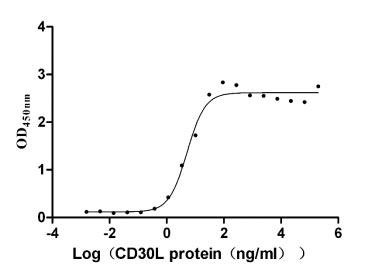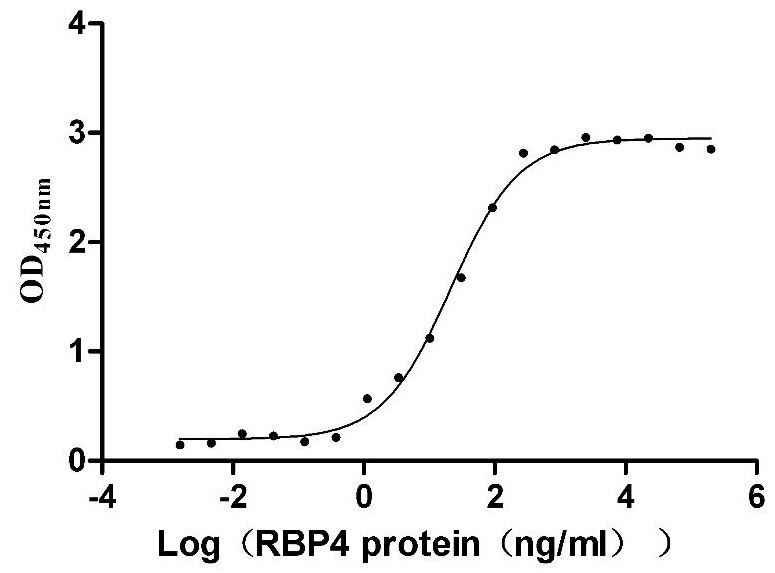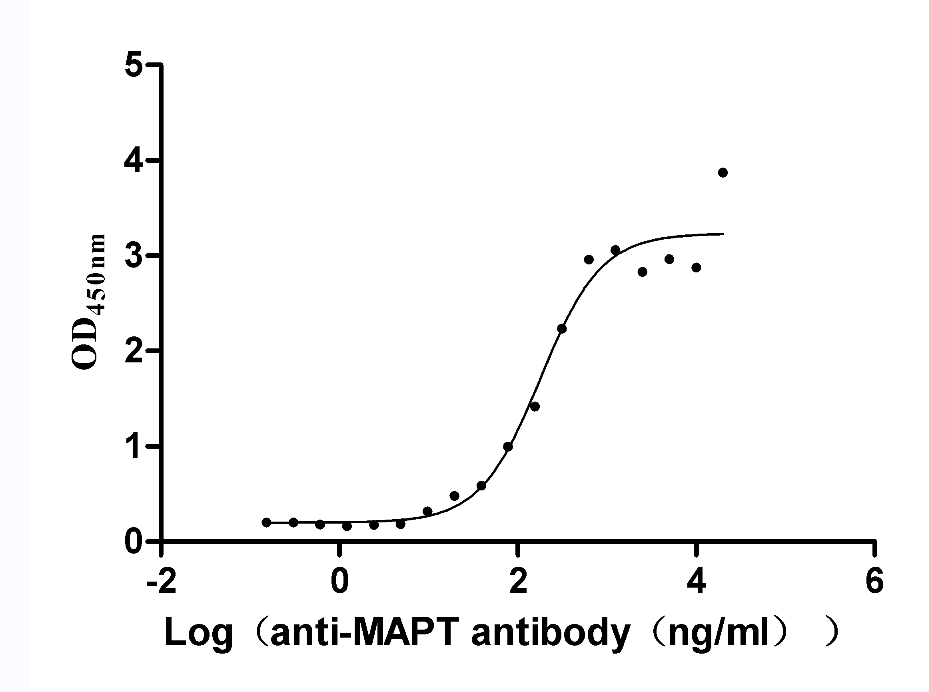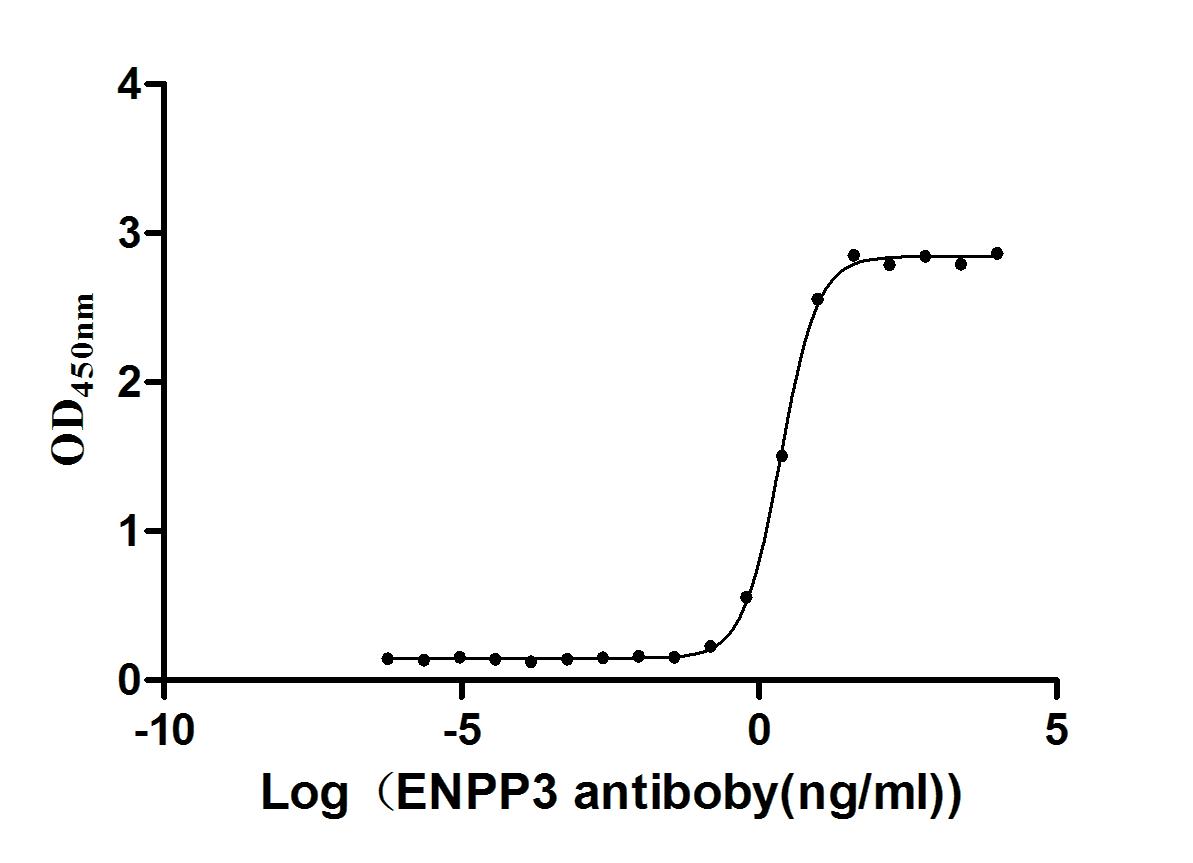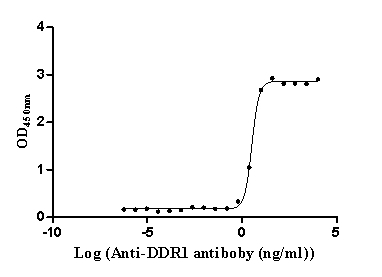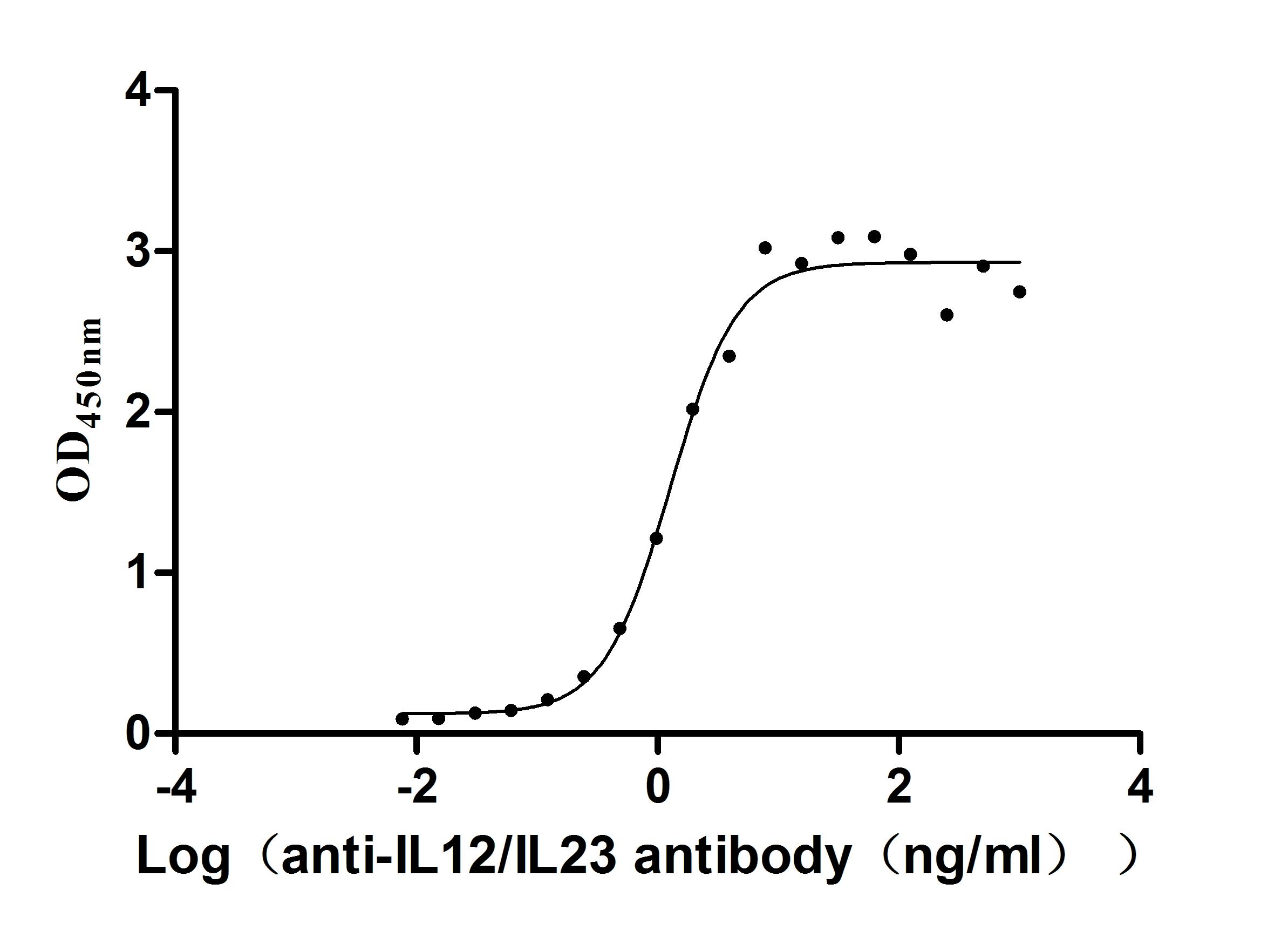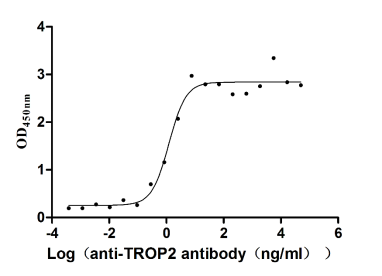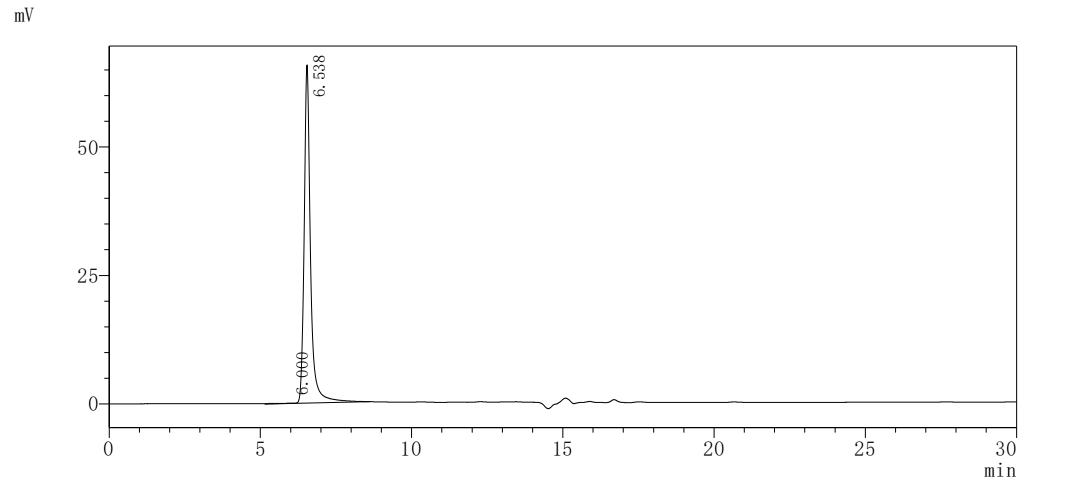Recombinant Human Epidermal growth factor-like protein 7 (EGFL7)
-
中文名称:人EGFL7重组蛋白
-
货号:CSB-YP890692HU
-
规格:
-
来源:Yeast
-
其他:
-
中文名称:人EGFL7重组蛋白
-
货号:CSB-EP890692HU
-
规格:
-
来源:E.coli
-
其他:
-
中文名称:人EGFL7重组蛋白
-
货号:CSB-EP890692HU-B
-
规格:
-
来源:E.coli
-
共轭:Avi-tag Biotinylated
E. coli biotin ligase (BirA) is highly specific in covalently attaching biotin to the 15 amino acid AviTag peptide. This recombinant protein was biotinylated in vivo by AviTag-BirA technology, which method is BriA catalyzes amide linkage between the biotin and the specific lysine of the AviTag.
-
其他:
-
中文名称:人EGFL7重组蛋白
-
货号:CSB-BP890692HU
-
规格:
-
来源:Baculovirus
-
其他:
-
中文名称:人EGFL7重组蛋白
-
货号:CSB-MP890692HU
-
规格:
-
来源:Mammalian cell
-
其他:
产品详情
-
纯度:>85% (SDS-PAGE)
-
基因名:EGFL7
-
Uniprot No.:
-
别名:EGF like domain 7; EGF like domain containing protein 7; EGF like domain multiple 7; EGF-like protein 7; EGFL 7; EGFL7; EGFL7_HUMAN; Epidermal growth factor like domain protein 7; Epidermal growth factor-like protein 7; MEGF 7; MEGF7; MGC111117; Multiple EGF like domain protein 7; Multiple EGF-like domains protein 7; Multiple epidermal growth factor like domain protein 7; Multiple epidermal growth factor-like domains protein 7; NEU1; NEU1 protein; NOTCH4 like protein; NOTCH4-like protein; RP11 251M1.2; UNQ187/PRO1449; Vascular endothelial statin; VE statin; VE-statin; ZNEU 1; ZNEU1
-
种属:Homo sapiens (Human)
-
蛋白长度:Full Length of Mature Protein
-
表达区域:24-273
-
氨基酸序列YRPGRRV CAVRAHGDPV SESFVQRVYQ PFLTTCDGHR ACSTYRTIYR TAYRRSPGLA PARPRYACCP GWKRTSGLPG ACGAAICQPP CRNGGSCVQP GRCRCPAGWR GDTCQSDVDE CSARRGGCPQ RCVNTAGSYW CQCWEGHSLS ADGTLCVPKG GPPRVAPNPT GVDSAMKEEV QRLQSRVDLL EEKLQLVLAP LHSLASQALE HGLPDPGSLL VHSFQQLGRI DSLSEQISFL EEQLGSCSCK KDS
-
蛋白标签:Tag type will be determined during the manufacturing process.
The tag type will be determined during production process. If you have specified tag type, please tell us and we will develop the specified tag preferentially. -
产品提供形式:Lyophilized powder
Note: We will preferentially ship the format that we have in stock, however, if you have any special requirement for the format, please remark your requirement when placing the order, we will prepare according to your demand. -
复溶:We recommend that this vial be briefly centrifuged prior to opening to bring the contents to the bottom. Please reconstitute protein in deionized sterile water to a concentration of 0.1-1.0 mg/mL.We recommend to add 5-50% of glycerol (final concentration) and aliquot for long-term storage at -20℃/-80℃. Our default final concentration of glycerol is 50%. Customers could use it as reference.
-
储存条件:Store at -20°C/-80°C upon receipt, aliquoting is necessary for mutiple use. Avoid repeated freeze-thaw cycles.
-
保质期:The shelf life is related to many factors, storage state, buffer ingredients, storage temperature and the stability of the protein itself.
Generally, the shelf life of liquid form is 6 months at -20°C/-80°C. The shelf life of lyophilized form is 12 months at -20°C/-80°C. -
货期:Delivery time may differ from different purchasing way or location, please kindly consult your local distributors for specific delivery time.Note: All of our proteins are default shipped with normal blue ice packs, if you request to ship with dry ice, please communicate with us in advance and extra fees will be charged.
-
注意事项:Repeated freezing and thawing is not recommended. Store working aliquots at 4°C for up to one week.
-
Datasheet :Please contact us to get it.
相关产品
靶点详情
-
功能:Regulates vascular tubulogenesis in vivo. Inhibits platelet-derived growth factor (PDGF)-BB-induced smooth muscle cell migration and promotes endothelial cell adhesion to the extracellular matrix and angiogenesis.
-
基因功能参考文献:
- Data show that the expression level of epidermal growth factor-like domain 7 (EGFL7) and epidermal growth factor receptor (EGFR) in invasive growth hormone-producing pituitary adenomas (GHPA) was much higher than that of non-invasive GHPA. PMID: 29951953
- EGFL7 was found to be a potential predictor for HCC survival and metastasis state. PMID: 29970668
- Levels of both EGFL7 mRNA and EGFL7 protein are increased in blasts of patients with acute myeloid leukemia (AML) compared with normal bone marrow cells. High EGFL7 mRNA expression associates with lower complete remission rates, and shorter event-free and overall survival in older (age >/=60 y) and younger (age <60 y) patients with cytogenetically normal AML. PMID: 28533390
- In conclusion, miR-126 could inhibit tumor proliferation and angiogenesis of hepatocellular carcinoma by down-regulating EGFL7 expression PMID: 27611944
- This phase II trial evaluated the efficacy of parsatuzumab (also known as MEGF0444A), a humanized anti-EGFL7 IgG1 monoclonal antibody, in combination with modified FOLFOX6 (mFOLFOX6) (folinic acid, 5-fluorouracil, and oxaliplatin) bevacizumab in patients with previously untreated metastatic colorectal cancer PMID: 28275117
- Oncogenic activation of EGFRwt in GBM is likely maintained by a continuous EGFL7 autocrine flow line. PMID: 27725228
- Egfl7 is thus an endogenous and constitutive repressor of blood vessel endothelial cell activation in normal and inflammatory conditions and participates in a loop of regulation of activation of these cells by pro-inflammatory cytokines. PMID: 27650497
- Up-regulated MALAT1 promoted the invasion and metastasis of GC, and the increase of EGFL7 expression was a potential mechanism via altering its H3 histone acetylation level PMID: 27259812
- These findings suggest that the stimulating effect of EGFL7-ESCs on fibroblast proliferation and migration may provide a useful strategy for wound healing. PMID: 27766530
- A gene expression study was conducted to investigate the levels of Egfl7 and miRNA126-5p in human carotid artery atherosclerotic plaques PMID: 26799121
- By regulating endothelial cell adhesion, EGFL7 plays a key role in the regulation of glioma angiogenesis. PMID: 26722408
- The preferential expression of EGFL7 in less differentiated hepatocellular carcinoma compared to VEGF, suggests a possible important role of this angiogenic factor in a later oncogenic and infiltrative/metastatic phase. PMID: 26542361
- EGFR mutational analysis is useful in the diagnosis of non-small-cell-lung cancer. PMID: 26288231
- The aim of the present descriptive study was to analyse the intra-tumoural expressions of epidermal growth factor-like domain 7 (EGFL7) and microRNA-126 (miRNA-126) in primary tumours from patients with stage II-IV colorectal cancer. PMID: 25592646
- EGFL7, OPN, and PGE2 may have a role in recurrence and metastasis of hepatocellular carcinoma PMID: 25730089
- High EGFL7 expression promotes migration and Epithelial-Mesenchymal Transition in pancreatic Cancer. PMID: 25987088
- Loss of EGFL7 expression is associated with Malignant Pleural Mesothelioma. PMID: 26504055
- Data suggest that, in trophoblast cells, EGFL7 regulates cell migration and invasion/placentation by activating multiple signaling pathways via MAPK, PI3K (phosphatidylinositol 3-kinase), and NOTCH1 (translocation-associated notch protein 1). PMID: 25667199
- EGFL7 may predict response to first-line chemotherapy and bevacizumab in patients with metastatic colorectal cancer PMID: 25140000
- Endothelial cells control pancreatic cell fate at defined stages through EGFL7 signaling. PMID: 25601205
- EGFL7 enhances EGFR-AKT signaling, epithelial-mesenchymal transition, and metastasis of gastric cancer cells. PMID: 24945379
- demonstrate significantly reduced Egfl7 expression in pre-eclampsia placentas, concurrent with a downregulation of Notch target genes PMID: 24751645
- The loss of EGFL7 expression play a role in the development and progression of systemic sclerosis. PMID: 24286167
- egfl7 is initially expressed in all endothelial cells and then is progressively restricted to veins and to their neighbouring capillaries. PMID: 24595089
- EGFL7 promotes growth of Renal cell carcinoma by facilitating migration and tube formation of endothelial cells. These effects were produced by EGFL7-mediated focal adhesion kinase phosphorylation through combination with epidermal growth factor receptor. PMID: 24815445
- malignant glioma cells and glioma vascular endothelial cells highly express VE-statin/Egfl7, which is significantly correlated with the degree of malignancy. PMID: 24696719
- Egfl7 is significantly upregulated in human epithelial tumor tissues, suggesting Egfl7 to be a potential biomarker for human epithelial tumors, especially liver and breast cancer. PMID: 23558933
- study provides clinical data indicating a relationship between miRNA-126 and the clinical outcome of metastatic colorectal cancer patients treated with chemotherapy combined with anti-VEGF-A, whereas the impact of EGFL7 is more speculative PMID: 23922111
- Early-onset intrauterine growth restriction at 20-24 weeks' gestation is associated with higher values of EGFL7 expression in maternal plasma. PMID: 23280513
- Egfl7 expression is thus associated with better prognosis factors and with the absence of lymph node invasion in human breast cancer lesions. PMID: 23404186
- Data indicate that EGFL7 and integrin alphavbeta3 integrin colocalized in vesicular structures in uman umbilical vein endothelial cells (HUVECs). PMID: 23386126
- Two angiogenesis-associated transcripts (Egfl7 and Acvrl1) showed lower expression in early-onset PE versus late-onset pre-eclampsia and versus gestational age-matched controls. PMID: 22013081
- Human breast cancer lesions expressing high levels of Egfl7. PMID: 22037871
- Studies indicate that Egfl7 controls blood vessel development by promoting endothelial cell migration and proliferation. PMID: 22160377
- Heterogeneous methylation in the promoter region of EGFL7 was associated with cancer progression in non-small cell lung cancer. PMID: 22018271
- miR-126 can downregulate EGFL7 expression at the protein level in ECV-304 cells. PMID: 20423846
- Studies indicate that two biologically active miRNAs miR-126 and its complement miR-126*, which are encoded by intron 7 of the egfl7 gene, have been described to mediate vascular functions. PMID: 20953557
- EGFL7 may be used as a predictive marker for glioma prognosis and as a potential therapeutic target for malignant glioma. PMID: 20213100
- Epidermal growth factor-like domain 7 suppresses intercellular adhesion molecule 1 expression in response to hypoxia/reoxygenation injury in human coronary artery endothelial cells. PMID: 20837907
- miR-126 can inhibit proliferation of non-small cell lung cancer cells through one of its targets, EGFL7. PMID: 20034472
- is the first identified inhibitor of mural cell migration specifically produced by endothelial cells. PMID: 14592969
- Human EGFL7 may protect endothelial cell from hyperoxia-induced apoptosis by inhibition of mitochondria-dependent apoptosis pathway. PMID: 17934064
- Intronic miRNAs from tissue-specific transcripts, or their natural absence, make cardinal contributions to cellular gene expression and phenotype. PMID: 18193184
- The lack of association between expression of miRNA and its host gene EGFL7 suggests their regulation by independent stimuli in colon cancer. PMID: 18521848
- Mature miR-126 can be generated from three different transcripts of EGFL7 with each one having its own promoter. PMID: 19116145
- Egfl7 promotes metastasis of hepatocellular carcinoma (HCC) by enhancing cell motility through EGFR-dependent FAK phosphorylation. PMID: 19824075
显示更多
收起更多
-
亚细胞定位:Secreted, extracellular space.
-
数据库链接:
Most popular with customers
-
Recombinant Human Tumor necrosis factor ligand superfamily member 8 (TNFSF8), partial (Active)
Express system: Mammalian cell
Species: Homo sapiens (Human)
-
Recombinant Mouse Transthyretin (Ttr) (Active)
Express system: Mammalian cell
Species: Mus musculus (Mouse)
-
Recombinant Rat Microtubule-associated protein tau (Mapt) (Active)
Express system: Mammalian cell
Species: Rattus norvegicus (Rat)
-
Express system: Mammalian cell
Species: Homo sapiens (Human)
-
Recombinant Human Epithelial discoidin domain-containing receptor 1 (DDR1), partial (Active)
Express system: Mammalian cell
Species: Homo sapiens (Human)
-
Recombinant Human IL12B&IL12A Heterodimer Protein (Active)
Express system: Mammalian cell
Species: Homo sapiens (Human)
-
Recombinant Human Tumor-associated calcium signal transducer 2 (TACSTD2), partial (Active)
Express system: Mammalian cell
Species: Homo sapiens (Human)
-
Recombinant Human C-C chemokine receptor type 9 (CCR9)-VLPs (Active)
Express system: Mammalian cell
Species: Homo sapiens (Human)


